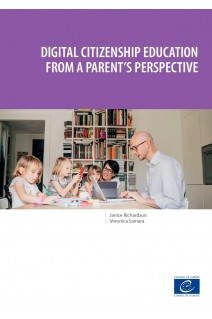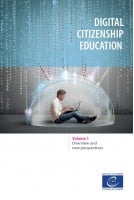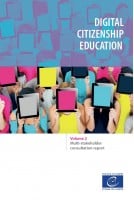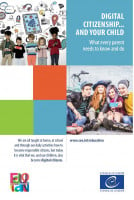EXECUTIVE SUMMARY PART I – SURVEY FINDINGS CHAPTER 1 – INTRODUCTION
1.1. Background
1.2. The survey
1.3. Survey launch – another impact of Covid-19
1.4. The profile of respondents
CHAPTER 2 – THE COVID-19 CRISIS – MANAGING CHILDREN’S EDUCATION
2.1. Recommendations – what the findings tell us
2.2. Learning online in the time of Covid
2.3 Distance learning offered by schools
2.4. Distance learning – what parents tell us
CHAPTER 3 – BUILDING DIGITAL CITIZENSHIP COMPETENCES THROUGH ONLINE ACTIVITIES
3.1. Recommendations – what the findings tell us
3.2. Children’s online activities and parental concerns
3.3. Creativity and play – what are the trends?
CHAPTER 4 – PARENTAL GUIDANCE FOR YOUNG DIGITAL CITIZENS
4.1. Recommendations – what the findings tell us
4.2. Rules families apply about children’s online activities
4.3. Privacy, a key parental concern
4.4. Content, an Achilles’ heel in awareness raising?
4.5. How often do children talk with parents about their activities online?
CHAPTER 5 – ACTIONS TO IMPROVE CHILDREN’S DIGITAL COMPETENCES
5.1. Recommendations – what the findings tell us
5.2. Guiding young digital citizens – parental strategies
5.3. Privacy, personal information and online reputation
5.4. Behaviour and social interactions on- and offline
CHAPTER 6 – EMPOWERING PARENTS IS KEY TO CHILDREN’S WELL-BEING
6.1. Recommendations – what the findings tell us
6.2. Forging meaning from digital jargon
6.3. What parents wish to have to support their children online
6.4. Topics of most concern, from a parent’s perspective
CHAPTER 7 – DIGITAL CITIZENSHIP EDUCATION – THE ROAD AHEAD
7.1. Recommendations – what the findings tell us
7.2. What are digital citizenship competences, and why do we need them?
7.3. Where does the responsibility lie?
7.4. Parents’ choice of topics and formats for more information
PART II – INTERVIEW FINDINGS ACKNOWLEDGEMENTS CHAPTER 8 – INTRODUCTION – CONTEXT AND DEMOGRAPHICS
8.1. A European-wide consultation adapted to national settings
8.2. Getting to know the interviewees
8.3. The importance of digital technology in parents’ and children’s lives
CHAPTER 9 – LEARNING IN THE TIME OF COVID
9.1. What parents tell us – recommendations
9.2. Positive experiences versus unmet needs, an ongoing dilemma
9.3. Positive effects on children’s learning and social well-being
9.4. Negative effects of the Covid-19 pandemic
CHAPTER 10 – LOOKING TO THE FUTURE
10.1. What parents tell us – recommendations
10.2. The remote schooling experience – from parents’ emotions to concrete suggestions
10.3. Improving remote learning – a shared responsibility
10.4. Solutions to shape remote schooling to the needs of young digital citizens
CHAPTER 11 – CHILDREN AND DIGITAL TECHNOLOGY – A POTENTIALLY CREATIVE TANDEM
11.1. Lessons learned and recommendations
11.2. What online activities are children spending their time on?
11.3. Monitoring children’s online activities – generally an age-related process
11.4. To monitor or not to monitor, that is the question
CHAPTER 12 – DIGITAL CITIZENSHIP – THE PARENTS’ PERSPECTIVE
12.1. A brief overview and recommendations
12.2. Describing a digital citizen
12.3. What parents suggest their children learn to be responsible digital citizens
12.4. Where and how should digital citizenship education take place?
CHAPTER 13 – IT TAKES A COMMUNITY TO RAISE A DIGITAL CITIZEN
13.1. Working together to educate young digital citizens
13.2. Advice and guidance that parents offer each other
13.3. Troubleshooting – mutual support to solve common digital issues
13.4. Further ideas to nurture innovation
CHAPTER 14 – FACING THE CYBER CHALLENGE – THE ROLE OF THE COUNCIL OF EUROPE
14.1. Recommendations from parents to help enhance digital citizenship skills
14.2. Finding support online
14.3. How can the Council of Europe support parents of young digital citizens?
APPENDICES APPENDIX I – BRIEF DESCRIPTION OF THE DIGITAL CITIZENSHIP DOMAINS
Being online
Well-being online
Rights online
APPENDIX II – FULL SURVEY QUESTIONNAIRE AND SCORING PROFILES
Digital citizenship education survey
APPENDIX III – SUMMARY RESPONSES FOR ALL 47 COUNTRIES APPENDIX IV – COMPARISON ACROSS RESPONDENTS’ AGE GROUPS APPENDIX V – COMPARISON ACROSS CHILDREN’S AGE GROUPS APPENDIX VI – INTERVIEW RECORDING SHEET









